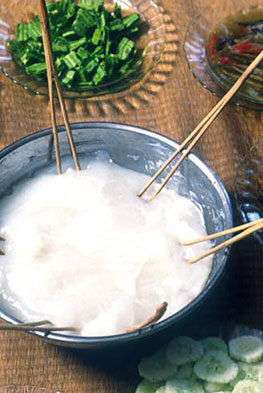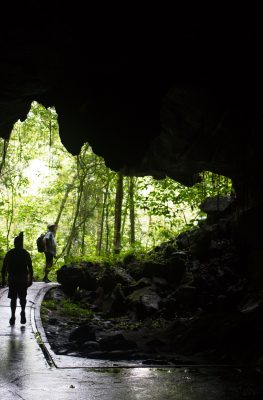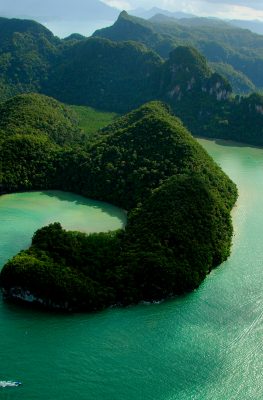Published on October 5, 2023
A Southeast Asian nation that stretches across two different regions in the South China Sea, Malaysia is known for its natural and cultural magnificence. A multicultural and multiethnic melting pot, Malaysia is rich with cultural wonders, thanks to its fusion of traditions, languages, and cuisines. From archaeological excavation sites to historic towns and living museums, there are countless places to visit in Malaysia that show off the country’s rich, fascinating heritage.
Lenggong Valley, Perak
In the heart of Peninsular Malaysia, Lenggong Valley is one of the Southeast Asian nation’s primary archaeological treasures. A veritable living history book, this site may even be hailed as the “cradle of civilization” in Southeast Asia. Within the lush greenery of Lenggong Valley are four archaeological excavation sites that span some two million years of human history; these locations have yielded everything from weapons and tools to skeletons, jewellery, and cave drawings. The oldest and most complete human skeleton to have been found in Malaysia also hails from Lenggong Valley. Known as Perak Man, the prehistoric skeleton is more than 11,000 years old.
Lenggong Valley’s magnificence extends beyond its cultural and historical significance. The land is known for its pristine jungle, massive cave systems, and verdant views, creating the perfect backdrop for cultural immersion. Thanks to its wealth of archaeological discoveries, it’s even a UNESCO World Heritage Site. The valley’s caves are open to visitors by appointment, and other destinations within the area, like the Lenggong Archaeological Museum, exhibit the region’s fascinating artefacts. The museum is also home to Perak Man!
Visiting Lenggong Valley allows you to encounter the remnants of ancient settlements and embark on an unforgettable journey through the centuries.
Gunung Mulu National Park, Sarawak
The state of Sarawak, in Malaysia’s Borneo Island, is home to Gunung Mulu National Park, a testament to the country’s incredible biodiversity and cultural significance. This park is another UNESCO World Heritage Site known for its gorgeous rainforests, beguiling limestone karst formations and caves, and important indigenous traditions. Though it is named after the second-tallest mountain in Sarawak, Gunung Mulu’s biggest claim to fame is undoubtedly its caves. These ancient limestone structures have been explored countless times and inspire awe each time. The park is also home to thousands of species of flora and fauna, including the endangered orangutan.
The natural wonders of Gunung Mulu National Park are paired with a fascinating melting pot of indigenous cultures. The local population of the park includes more than six ethnic groups, from the Orang Ulu to the semi-nomadic Penan people. Each community has unique traditions and ways of life, and engaging with these people gives visitors rare insight into Malaysia’s rich cultural tapestry.
Immerse yourself in Malaysia’s beautiful landscape and culture with a visit to Gunung Mulu National Park, an adventure that will leave you in awe of the country’s wonders.
Melaka and George Town
Twin historical gems in the picturesque Straits of Malacca, the cities of Melaka and George Town are proof of Malaysia’s wealth of cultural and colonial heritage. They offer true journeys through time, representing more than five centuries of coexistence and interchange between Europe and Asia. Known best for their unique fusion architecture and culture, these towns are a must-visit destination for travellers interested in a truly spectacular immersion experience.
Melaka’s origins were as a thriving trading port. Due to the diverse population that settled in the area in its six hundred years of history, Melaka has hints of Dutch, Portuguese, British, and Chinese influences. Its most iconic landmarks are A Famosa, a stately Portuguese fortress, and Jonker Street, a night market with fascinating Peranakan charm.
George Town, meanwhile, is equally charming. A veritable melting pot of cultures, George Town’s historic district is covered in street art and dotted with fascinating museums and historic houses. It is also known for its delectable Malay cuisine.
These magnificent cities are prime examples of Malaysia’s multicultural past, present, and future. Whether you’re a history buff, foodie, or art enthusiast, there will be something for you in Melaka and George Town.
Kinabalu Park, Sabah
Malaysia’s first UNESCO World Heritage Site, Kinabalu Park, is a treasure that embodies the captivating natural environment of the country. Boasting more than 4,000 species of plants and animals, Kinabalu Park is a sanctuary of unparalleled beauty and ecological significance. It is named after the highest mountain on the island of Borneo, Mount Kinabalu, located at the centre of the 754 square kilometres of the park.
The mountain is the centre of thousands of years of local folklore and traditions, acting as a beacon for many adventurers. There are a number of myths and legends about Mount Kinabalu, from its significance in some local religious ceremonies to stories behind how the name came to be. It is also a sacred site for the indigenous Kadazan and Dusun people. For this reason, Kinabalu Park has a rich spiritual history that contributes to its importance as one of Malaysia’s cultural wonders.
Beyond the dense rainforests and alpine meadows of Mount Kinabalu, the surrounding park is home to world-famous species of pitcher plants and orchids; it is also a habitat for numerous endangered and rare species of animals, like the Bornean gibbon. When you visit, you can hike, stop by the park’s hot springs (Poring Hot Spring), watch for birds, learn about the park’s cultural significance, and much more.
Sarawak Cultural Village, Sarawak
The Sarawak Cultural Village is a living museum highlighting the vibrant diversity of Sarawak’s indigenous people and culture. Sarawak is the largest of Malaysia’s thirteen states, and it is known for its multicultural influences and unique traditional lifestyles. The cultural village is a microcosm of these cultures and allows visitors to immerse themselves in the fascinating heritage of Sarawak easily.
Home to authentic ethnic homes, traditional arts workshops, longhouses, dance and other cultural performances, and concerts, the Sarawak Cultural Village offers visitors an intimate look inside the lives of Sarawak’s various ethnic indigenous communities.
Plan your visit to Malaysia today with the help of Visit Southeast Asia.





